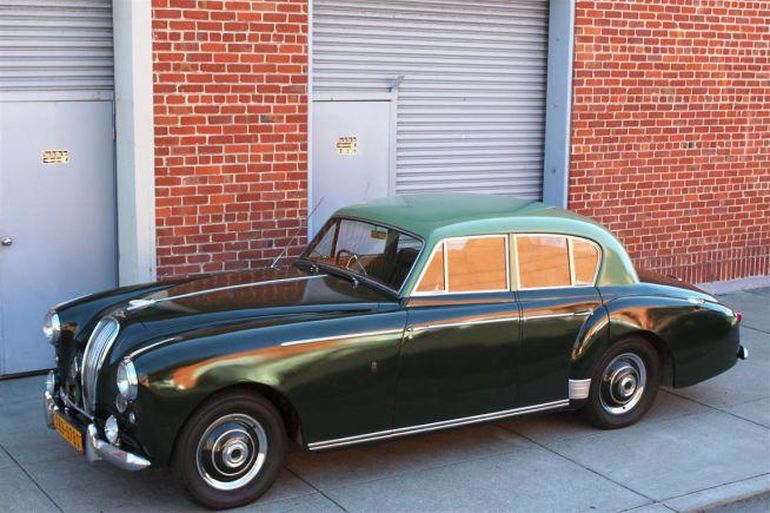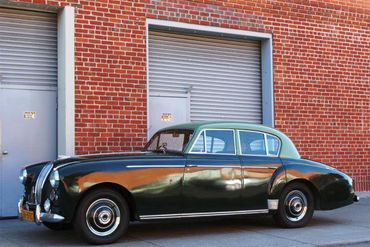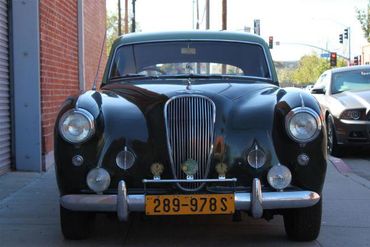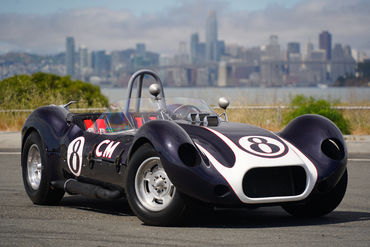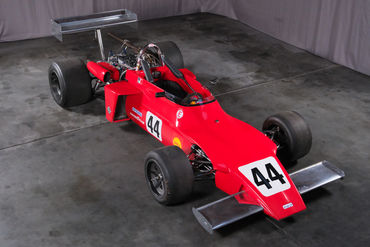Sold
SOLD 03/14
1955 Lagonda
3 Litre Saloon
The Sophisticated Brainchild of W. O. Bentley and David Brown. Two Owners from New, Matching Numbers
- VINLB/290/1/138
- Exterior ColorTwo-Tone Green
- Interior ColorGreen Leather
- Mileage76727 Miles
- Engine3.0 Litre Inline 6-Cylinder
- Engine no.VB6H/460
- Transmission4-Speed Manual
- StatusSold
- StockFJ1539
Description
1955 Lagonda 3.0 Litre Saloon
s/n LB290/1/138, engine no. VB6H/460
Two-Tone Green with Green Leather Interior
The 2.6 Litre was Lagonda’s first postwar model, and was a technically sophisticated clean sheet design that owed its existence to some of the best and brightest names in British motoring: Frank Feeley, Walter Owen Bentley, and David Brown. The exterior coachwork was designed by Frank Feeley, who also designed the Aston Martin DB2, while the mechanical components, particularly the lovely twin-cam inline-6, were designed by W.O. Bentley, and David Brown provided additional technical refinements and the backing to put the car in production.
The heart of the car and its story is famously W.O. Bentley’s 2.6 liter dual overhead cam inline-6 that also powered the DB2. W.O. Bentley had joined Lagonda in 1935, after his three year obligation to Rolls-Royce was met following their absorption of Bentley Motors Ltd. in late 1931. In the 1930s, he was Lagonda’s chief designer and was responsible for their sophisticated V12 engine and several other sophisticated cars during the interwar years. After World War II, he designed the 2.6 liter twin cam inline-6 for the Lagonda 2.6 Litre, and it is reportedly this engine specifically that motivated David Brown to purchase Lagonda in 1947 since he had purchased Aston Martin earlier that year and was still utilizing the pushrod actuated inline-4 that Aston had on hand. Ultimately, the 2.6 Litre became W.O. Bentley’s last car design.
When Brown bought Lagonda in 1947, they were already working on the 2.6 Litre, which, in addition to Bentley’s inline-6, had a host of other sophisticated features. This included independent suspension all round (including coil springs and dual wishbones at the front), inboard rear brakes, and X braced chassis. While prototypes had a Cotal pre-selector gearbox, David Brown supplanted this with the “David Brown” synchronized 4-speed gearbox, also shared with the DB2. The cars were available in open, closed, and saloon forms, and were sophisticated, luxurious, and expensive. Just 550 examples of all body styles were built in all, of which perhaps 50 were dropheads.
In 1953, the 2.6 Litre was replaced by the 3.0 Litre, which, as the name implied, had a larger engine, achieved by boring the cylinders out. Interestingly, the enlarged Lagonda engine was available in the 3.0 Litre fully eight months prior to the larger engine becoming available in the DB2/4. The 3.0 Litre had more modern styling, giving the cars newfound elegance. They were longer and lower and had better performance and a sporting feel provided by the inclusion of rack and pinion steering and floor change gearshift. Approximately 270 examples of all three bodystyles were built.
This particular car is a matching-number example that was sold new in Southern Rhodesia (now Zimbabwe), where it spent most of its life. It remained with the same family from new until 2008, when its current owner purchased it. The car was in Africa until at least the mid 1990s, at which point the original family moved to British Columbia, bringing the car with them. The car’s current owner purchased it from them at that point and has performed sympathetic maintenance work including refreshing the braking system.
The car has a nice even cosmetic patina. The body is straight and solid, with generally good gaps, although there is a pair of dents in the front right fender. The paint is older and shows checking and some dullness. The chrome is intact but has lost its luster in places and shows patina. The glass and lights are generally good with the exception of the front windscreen, which has road wear and one star. The car is equipped with Lucas headlamps and Flamethrower fog lamps, both of which are in excellent order. There is a badge bar showing the car’s participation in several events in Africa in 1989 and into the mid 1990s.
The interior has a wonderful authentic patina. The leather seats are in fine shape, are superbly mellowed, and absolutely should not be redone. The wood is unwarped and uncracked, with some superficial cracks to the varnish only. The wood trim itself has excellent integrity. The switches and instruments are in fine shape, as is the wool headliner. The carpets are in very good shape and the car has a handsome vintage Blaupunkt radio.
The engine compartment is unrestored and not particularly clean, although it is correct and unmolested in appearance. The twin cam engine is a beautiful unit that will be familiar to an Aston Martin enthusiast, and it’s amusingly enjoyable to see it in a different car. The trunk is also unrestored and intact, in good original condition. The undercarriage is extremely solid and unrestored
This is an exceptionally rare opportunity to acquire an unusual thoroughbred car with great history and integrity. A structurally exceptional example with interesting history and essentially two owners, this car is ideal for the buyer seeking something different. It has a lovely even patina and a surprising level of mechanical sophistication, to be expected from a car emerging from the minds of W. O. Bentley and David Brown.
The above vehicle information is complete and accurate to the best of our knowledge at the time it is posted to this website. Corrections or additional information is always appreciated. All advertised prices exclude government fees and taxes, any finance charges, any dealer document preparation charge, and any emission testing charge. Vehicles are subject to prior sale. All advertised to be true but not guaranteed. We assume no liability for errors or omissions.
Inquire About This Car
Fantasy Junction • 510-653-7555 • 1145 Park Ave, Emeryville, CA 94608
